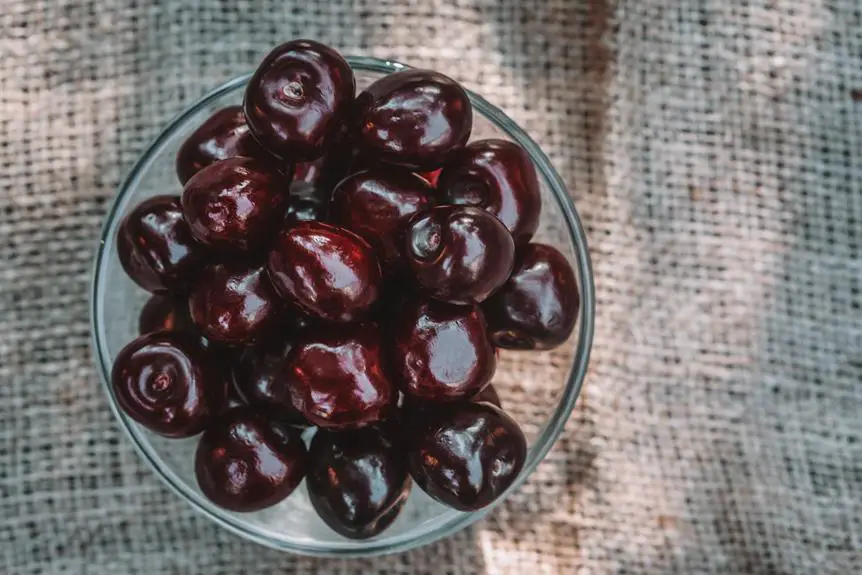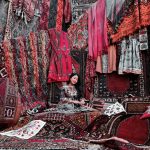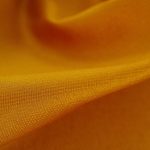Glass fiber fabrics come in various types, like a diverse array of threads in a textile tapestry. Each type offers unique characteristics, making them suitable for different applications.
You'll encounter woven glass fiber fabrics, with their traditional crisscross pattern, and non-woven fabrics, which are crafted without weaving. Knitted glass fiber fabrics, on the other hand, boast a more flexible structure.
Then there are stitch-bonded fabrics, with their reinforced durability, and multi-axial fabrics, designed for strength in multiple directions. Lastly, hybrid glass fiber fabrics combine the qualities of different materials.
Understanding these distinctions will empower you to select the most fitting glass fiber fabric for your specific needs.
Key Takeaways
- Woven Glass Fiber Fabrics, Non-Woven Glass Fiber Fabrics, Knitted Glass Fiber Fabrics, and Multi-Axial and Hybrid Glass Fiber Fabrics are the different types of glass fiber fabrics.
- Woven Glass Fiber Fabrics are made by weaving glass fibers together in a specific pattern and are suitable for aerospace, automotive, marine, and construction industries.
- Non-Woven Glass Fiber Fabrics are produced by bonding or matting glass fibers together and are suitable for filtration, insulation, and reinforcement applications.
- Knitted Glass Fiber Fabrics are flexible, stretchable, and known for exceptional strength and durability. They have versatile applications in various industries including automotive, aerospace, marine, construction, and sports equipment.
Woven Glass Fiber Fabrics
Woven glass fiber fabrics are made by weaving glass fibers together to create a strong and versatile material. The fabric construction involves interlacing the glass fibers in a specific pattern to form a cohesive and durable textile. The properties of woven glass fiber fabrics include high tensile strength, excellent resistance to heat and chemicals, and low electrical conductivity. These properties make them suitable for a wide range of applications in industries such as aerospace, automotive, marine, and construction.
The manufacturing process of woven glass fiber fabrics begins with the production of glass filaments, which are then woven into a fabric using techniques such as plain weave, twill weave, or satin weave. These weaving methods determine the appearance and mechanical properties of the fabric. Once woven, the fabric may undergo treatments such as resin impregnation or coating to further enhance its properties for specific applications.
Woven glass fiber fabrics find applications in reinforcing composite materials, insulation, protective clothing, and filtration. Their ability to provide strength and stability while being lightweight makes them indispensable in various high-performance and demanding environments.
Non-Woven Glass Fiber Fabrics
Non-woven glass fiber fabrics are produced by bonding or matting glass fibers together, offering a versatile alternative to woven fabrics for various industrial applications. Fabric manufacturing of non-woven glass fiber fabrics involves a process where the fibers are bonded together using a chemical binder, heat, or mechanical means. This results in a fabric that's highly uniform and possesses excellent strength and dimensional stability. The material properties of non-woven glass fiber fabrics make them suitable for a wide range of applications, including filtration, insulation, and reinforcement.
One key advantage of non-woven glass fiber fabrics is their ability to conform to complex shapes and contours, making them ideal for applications where traditional woven fabrics may be less suitable. The manufacturing process allows for flexibility in creating fabrics with varying thicknesses and densities, providing tailored solutions for specific industrial needs. Additionally, non-woven glass fiber fabrics exhibit exceptional resistance to heat, chemicals, and abrasion, further enhancing their suitability for demanding environments.
Knitted Glass Fiber Fabrics
Knitted glass fiber fabrics offer a high level of versatility in applications, making them suitable for a wide range of uses. Their flexibility and stretch properties enable them to conform to complex shapes and contours, providing a seamless fit for various products.
Additionally, these fabrics are known for their exceptional strength and durability, making them a reliable choice for demanding applications.
Versatility in Applications
Exploring the versatility of using knitted glass fiber fabrics allows you to understand their wide range of applications in various industries.
- Automotive Industry
- Reinforcement in composite materials for car body panels, providing strength and impact resistance.
- Heat insulation and soundproofing materials due to their excellent thermal and acoustic properties.
Knitted glass fiber fabrics find applications across various industries due to their inherent properties such as high tensile strength, flexibility, and resistance to heat and chemicals.
Their versatility enables their use in the automotive industry, where they serve as reinforcement materials for car body panels, providing exceptional strength and impact resistance.
Additionally, they're utilized as heat insulation and soundproofing materials due to their excellent thermal and acoustic properties.
These fabrics also find applications in aerospace, marine, construction, and sports equipment industries, showcasing their outstanding performance and adaptability.
Flexibility and Stretch
When considering the flexibility and stretch of glass fiber fabrics, you'll find that they offer a range of applications due to their ability to conform to complex shapes and surfaces.
Knitted glass fiber fabrics are designed to provide excellent flexibility, making them ideal for applications where conformability is crucial. The fabric construction of knitted glass fiber fabrics allows for multidirectional stretch, enabling them to adapt to various contours without losing their structural integrity. This unique stretch characteristic is attributed to the specific knitting pattern used during the manufacturing process.
The textile properties of knitted glass fiber fabrics, such as their ability to stretch and conform, make them suitable for applications in industries like aerospace, automotive, and sports equipment. This flexibility and stretch capability enhance the performance and durability of products where these fabrics are utilized.
Strength and Durability
To understand the strength and durability of knitted glass fiber fabrics, you need to assess their ability to withstand stress and maintain structural integrity in various applications. The material composition of knitted glass fiber fabrics, typically consisting of woven glass fibers, contributes to their exceptional strength. The fibers are intertwined in a knitted pattern, enhancing their ability to distribute and resist forces effectively.
Furthermore, knitted glass fiber fabrics exhibit remarkable impact resistance, making them suitable for applications requiring protection against sudden forces or impacts. This impact resistance is crucial in ensuring the longevity and reliability of the fabric in demanding environments.
Overall, the combination of material composition and impact resistance makes knitted glass fiber fabrics a durable and robust choice for a wide range of industrial and commercial applications.
- Material composition:
- Woven glass fibers
- Impact resistance
Stitch-Bonded Glass Fiber Fabrics
The first step in understanding stitch-bonded glass fiber fabrics is to recognize that they're designed to provide strength and stability in various applications. These fabrics are created by mechanically stitching together the glass fibers, resulting in a durable and robust material. Stitch-bonded fabric properties include high tensile strength, excellent dimensional stability, and resistance to fraying, making them suitable for demanding applications.
Stitch-bonded glass fiber fabrics find application in a wide range of industries, including automotive, aerospace, construction, and sports equipment manufacturing. In the automotive sector, these fabrics are utilized in the production of composite components for lightweighting and enhancing structural integrity. In aerospace, they're used for manufacturing interior panels and aircraft components due to their high strength-to-weight ratio. Moreover, stitch-bonded glass fiber fabrics are employed in construction for reinforcing concrete structures and in sports equipment such as skis and snowboards for their exceptional strength and durability.
Understanding the properties and applications of stitch-bonded glass fiber fabrics is crucial for harnessing their full potential in various industrial and commercial settings.
Multi-Axial Glass Fiber Fabrics
Multi-axial glass fiber fabrics offer a range of fabric orientation options that can be tailored to specific composite material reinforcement needs. These fabrics provide structural strength advantages by allowing for precise control over the distribution of fibers in multiple directions.
Fabric Orientation Options
You can choose from various fabric orientation options when working with multi-axial glass fiber fabrics. These orientations are achieved through a specialized manufacturing process that results in fabrics with different properties and characteristics.
When it comes to fabric orientation, there are two primary options to consider:
- Unidirectional Fabrics: These fabrics consist of fibers aligned in a single direction, providing high tensile strength along the axis of orientation. They're ideal for applications requiring strength in specific directions.
- Parallel to the Length of the Fabric: Offers exceptional strength along the length of the fabric.
- Diagonal to the Length of the Fabric: Provides strength at an angle to the length, suitable for applications requiring diagonal reinforcement.
Understanding the fabric orientation options allows you to select the most suitable multi-axial glass fiber fabric for your specific project requirements.
Composite Material Reinforcement
When reinforcing composite materials, consider utilizing multi-axial glass fiber fabrics to enhance strength and durability. These fabrics are designed to provide reinforcement in multiple directions, offering improved material properties such as increased stiffness and impact resistance.
The manufacturing process involves laying continuous glass fibers at various angles, which allows for tailored reinforcement in specific load directions. This method provides superior mechanical properties compared to unidirectional fabrics, making it an ideal choice for applications requiring enhanced performance.
The multi-axial fabric's ability to distribute loads effectively across different axes contributes to improved structural integrity and damage tolerance in composite materials.
Structural Strength Advantages
Enhancing composite material reinforcement with multi-axial glass fiber fabrics offers significant structural strength advantages, leading to improved performance and reliability in various applications.
Multi-axial fabrics provide superior tensile reinforcement due to their ability to distribute loads in multiple directions, enhancing overall structural integrity. This feature makes them highly effective in applications requiring high tensile strength, such as aerospace components and automotive parts.
Additionally, the multi-axial layout of fibers in these fabrics enhances impact resistance by providing multidirectional support, effectively dissipating and minimizing the effects of impacts.
As a result, structures reinforced with multi-axial glass fiber fabrics exhibit enhanced toughness and durability, making them ideal for applications where impact resistance is crucial, such as sports equipment and protective gear.
Hybrid Glass Fiber Fabrics
Hybrid glass fiber fabrics combine the properties of glass fibers with other reinforcing materials to create a versatile and high-performance composite. Material combinations in hybrid glass fiber fabrics can include carbon, aramid, or natural fibers, each contributing specific characteristics to the composite. These combinations allow for tailoring the fabric to meet specific performance requirements, such as increased strength, impact resistance, or reduced weight.
The performance characteristics of hybrid glass fiber fabrics are significantly influenced by the choice of materials. For instance, combining glass fibers with carbon fibers can result in a fabric with high tensile strength and stiffness, ideal for applications requiring structural reinforcement. On the other hand, blending glass fibers with aramid fibers can enhance the fabric's impact resistance and toughness, making it suitable for protective gear and impact-prone applications.
The versatility of hybrid glass fiber fabrics makes them valuable for a wide range of industries, including aerospace, automotive, marine, and sports equipment manufacturing. By carefully selecting and combining different materials, hybrid glass fiber fabrics can be tailored to meet specific performance requirements, offering a balance of properties that aren't achievable with a single material.
Frequently Asked Questions
What Are the Specific Applications for Each Type of Glass Fiber Fabric?
When choosing glass fiber fabrics, consider the specific applications and industrial uses of each type. Compare their material properties to determine the best fit for your needs. Understanding these distinctions will help you make informed decisions.
How Do the Different Types of Glass Fiber Fabrics Compare in Terms of Strength and Durability?
Glass fiber fabrics vary in strength and durability, with some types offering higher tensile strength and better chemical resistance. Understanding these differences will help you choose the right fabric for your specific application.
Are There Any Special Considerations for Using These Fabrics in Extreme Temperatures or Harsh Environments?
In extreme temperatures or harsh environments, specialized coatings on glass fiber fabrics provide protection. Environmental testing ensures durability. Consider these factors when selecting fabrics for your application. Ensure they meet the required specifications for your specific conditions.
Can the Different Types of Glass Fiber Fabrics Be Combined or Layered for Specific Applications?
Yes, you can combine different types of glass fiber fabrics to enhance properties and achieve specific performance benefits. Layering techniques allow for tailored solutions in various applications, providing increased strength, durability, and flexibility.
Are There Any Specific Care and Maintenance Instructions for Each Type of Glass Fiber Fabric?
When handling glass fiber fabrics, it's crucial to follow specific care instructions and maintenance tips to ensure longevity and performance. Each type may have unique requirements, so be sure to consult the manufacturer's guidelines.
- Where to Buy Sherpa Suede Fabric - July 12, 2025
- How to Draw or Illustrate the Texture of Suede Fabric - July 12, 2025
- What Is Baseball Suede Leather Fabric? - July 12, 2025







